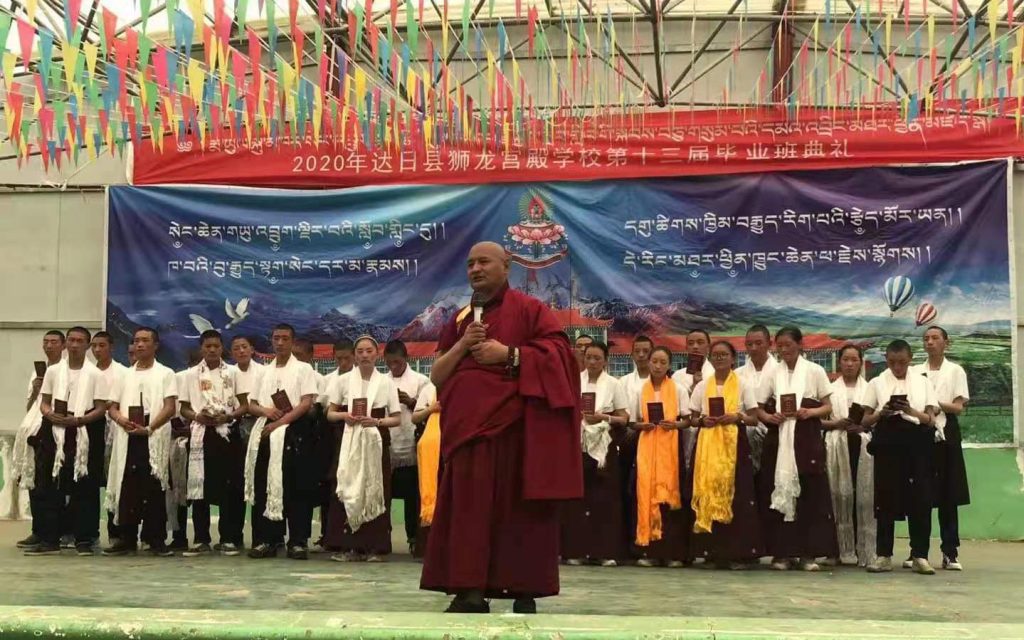
Outcry From Tibetans After School Is Given Orders to Close
Head of school, concerned parents and former students request higher authorities to reconsider their decision
On 8 July, a week after the Chinese Communist Party’s (CCP) centenary celebration, Chinese authorities in Golog, eastern Tibet, ordered the closure of Sengdruk Taktse middle school in Darlak County. Without giving any official reason for the shutdown of the private Tibetan school, all the students have been advised to enrol in other government-affiliated schools in the region.
Confidential sources from the area confided that the motives behind the closure of the school were political. The school’s primary language of instruction is Tibetan and it provides Tibetan culture-based learning for Tibetan students in the region. However, the officials have given the excuse of the requirement for monks to study in the monasteries instead of schools. The majority of the students and staff in the school are monks and tantric practitioners.
As a consequence, this year’s graduation day, usually a celebration, marked the last day of the school’s existence. In the closing speech, Khandrul Jigme Kunsang Gyaltsen, co-founder and head of the school and a renowned abbot from the esteemed Larung Gar Buddhist Academy, remembered the school’s inauguration on 5 December 1998. He asserted its founding principles of providing education to the destitute, orphaned and those without the means to access formal schooling. He further explained that the school was established in accordance with the laws, with the approval of concerned prefectural and county governments and that it has abided by the constitution of the People’s Republic of China. He also expressed his expectation of receiving an official clarification from the higher authorities regarding the school’s closure.
A DISTINGUISHED CENTRE OF LEARNING

Khandrul Jigme Kunsang Gyaltsen giving a speech during 2020’s graduation ceremony. (Photo: Radio Free Asia)
Previously established as a primary school, Sengdruk Taktse later received a license to become a secondary school in 2008.
In its founding years, opportunities for formal schooling in the Golog region were extremely limited and there were many children unable to access school education. Prioritising orphans and children from poor families, the foundation of the school was laid by enrolling its first batch of around 30 students in 1999. Over the course of time, through the sincere efforts and dedication of its founding members, the school flourished and distinguished itself as a centre of excellence amongst the Tibetan farmers and nomadic community across Tibet. Former students had gone on to work in various capacities of government jobs, entrepreneurship and virtuous roles such as monks and nuns.
Many concerned Tibetans – parents, staff and former students – deeply value and respect the school, and are appealing to the authorities to reconsider the decision. Tibet Watch received a copy of a petition written by a former student of the school to the concerned authorities. In the heartfelt appeal, the petitioner had expressed how the school is also a home for many orphans and poor children and hoped for the survival of the school, whose gratitude and care was referred to as that of a mother’s.
Information supplied by Tibet Watch

